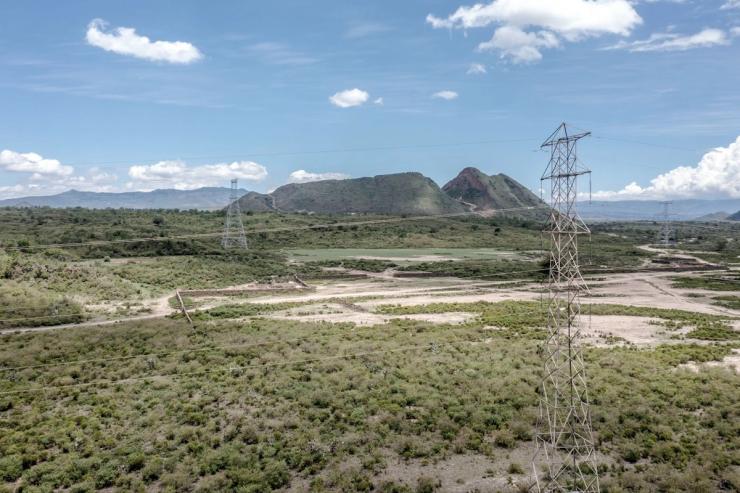The News
Kenya’s government is fast-tracking new energy deals to shore up electricity supplies as its inability to meet power demands threatens growth in East Africa’s biggest economy and undermines industrialization plans.
A seven-year moratorium on the signing of new power purchase agreements was lifted as part of the drive to ramp up electricity access. The energy ministry is holding talks with 65 energy producers offering a combined capacity of 1,112 MW — nearly half of the country’s total current capacity. The majority of the producers are hydropower developers, with solar and geothermal also in the mix. A brief from the ministry confirmed that more meetings with these energy producers are lined up for November, with some of the negotiations having previously stalled due to the moratorium.
MPs voted to lift the moratorium last week, following a sustained push over the past year from President William Ruto’s government. Ruto announced this month that Kenya was undertaking loadshedding — rationing power in certain areas during peak demand hours — as the country’s capacity of 2,311 MW was being outpaced by record demand for electricity. The president has said the country needs to raise its capacity to at least 5,000 MW to drive industrial expansion and overall economic growth.
Tobias Alando, chief executive of the Kenya Association of Manufacturers, told Semafor that continued loadshedding “could shrink the economy by 10-20%.” He warned that total losses could amount to “about $2 billion annually if loadshedding persists,” citing material losses, idle labour, equipment damage and maintenance costs. “That level of loss is unsustainable for both government and industry,” he added.
Know More
The PPA moratorium was imposed in 2018 to allow for the review of existing agreements, which a government taskforce blamed for expensive power prices, noting that they were skewed to favour independent power producers (IPPs). This has caused Kenya to increasingly rely on imported power supplies from neighbouring Ethiopia and Uganda, with the share of imported electricity on the national grid rising over the past several years.
Kenya’s largest private sector umbrella body welcomed the lifting of the moratorium, telling Semafor that significant investment in power generation and high-voltage transmission lines was necessary to mitigate the ongoing loadshedding.
James Mwangi, head of energy at the Kenya Private Sector Alliance (KEPSA), said that the ongoing loadshedding emphasized “the urgency of us getting additional generation capacity.” He said rationing so far had been “subtle” to shield the largest customers of state-owned Kenya Power, the nation’s main power distributor, most of whom are industries located in key cities including Nairobi and Mombasa.
“It’s important to business to make sure the power is available, and that it can get to where it’s needed. Cut the system losses, and onboard power at a cheaper rate that is still attractive to investors,” Mwangi noted.
KEPSA also expects energy auctions to be rolled out “within the next two to three years” to offer businesses competitive pricing for power, Mwangi said. Energy auctions, he said, would aid in boosting transparency by allowing energy producers to place bids to power various projects based on their specific energy demands, including data centers which he said represented a major opportunity for Kenya. He said there was “great interest” from global energy producers in the Kenyan market, particularly those in the renewables space.
Step Back
A draft national energy policy published by the energy ministry earlier this year confirms plans for “new capacity of variable renewable energy to be procured through a Renewable Energy Auctions process.”
Data from the Energy and Petroleum Regulatory Authority indicates that Kenya’s electricity demand surged to 2,316 MW in 2024, the highest on record, driven by industrial growth and urbanization. The share of electricity imports on the national grid more than doubled in the year to June 2025 to 10.6%, up from 4.87% a year earlier and just 1% in 2021.
Martin’s view
A major trend in Kenya’s energy sector over the last few years has been large companies developing their own power plants, with many opting for solar. The combined output of captive power plants by private companies grew 13.4% in the year to June to 603.8 MW.
Failure to invest in the country’s national generating capacity and upgrading aging transmission lines will only further this trend and disincentivize large manufacturers from setting up shop. However, it’s not just about generating and distributing enough power, but also making sure prices are competitive.
The moratorium on the signing of new PPAs was put in place after it was established that IPPs were selling power at exorbitant prices to Kenya Power, state-owned power distributor — often more than double the prices of power sold by KenGen, the state-owned power generating company. Kenya Power would pass the cost on to consumers. Now that the moratorium has been lifted, utmost transparency will be required to avoid being locked into new, years-long contracts that could further burden consumers with high energy prices.
The View From South Africa
The continent’s largest economy, South Africa, has in recent years grappled with intense power shortages that threatened to derail economic growth and key sectors including manufacturing. But it is steadily turning things around following extensive changes at state-owned power company Eskom since 2022, including the appointment of a new board with greater technical expertise. Loadshedding took place only on 13 days in the 2025 financial year compared to 329 days over the previous year.
With fewer breakdowns at coal-fired power stations, Eskom has been able to lower its costs by reducing reliance on expensive diesel generators. Its financial performance was also boosted by the imposition in April of a more than 12% hike in electricity tariffs, a longstanding demand of the utility company to the National Energy Regulator of South Africa.
Notable
- Nigeria is looking to accelerate progress on its grid expansion plan, backed by Germany and technology company Siemens, as it aims to add 12,000 MW to the grid and end the country’s perennial power shortages.


